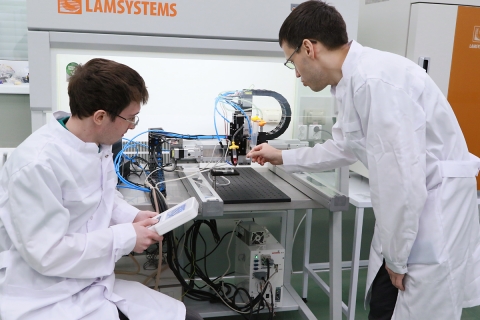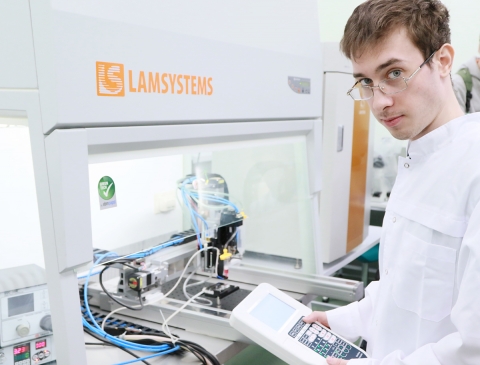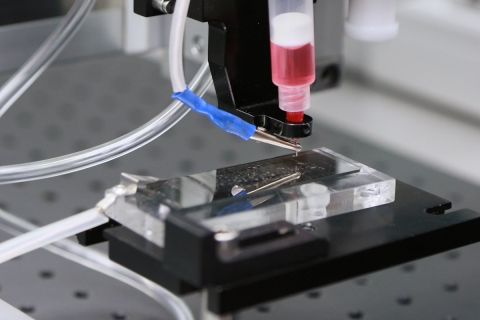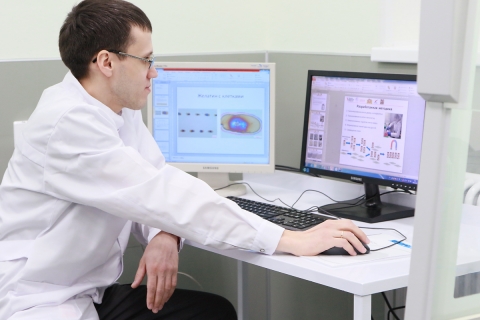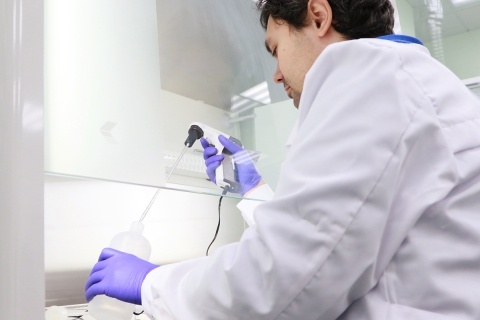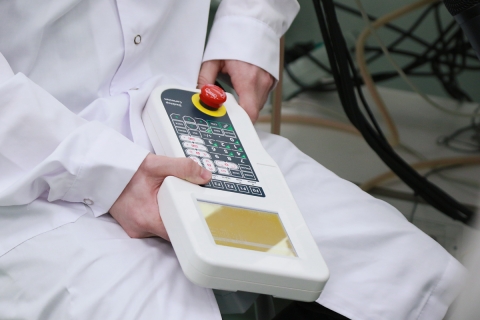The press conference was held on February 8, 2018, on the Day of Russian Science, in anticipation of the opening of the Center for Biotechnology and Bioengineering on the basis of the UCSU MN. The staff of the UCSU MN told about new equipment and new biological research, namely, the possibility of printing viable cell groups and fabrics during press conference.
The printer at the Institute of Natural Sciences and Mathematics of the UrFU, used to create cellular layers or multi-layer cellular structures, resembles a conventional 3D printer in terms of operation. The conditions in the bioprinter are tailored specifically to maintain life in the cells. On the glass substrate with a conductive coating, the necessary material is applied: the nutrient medium with the cells. After this, the structure is transferred to the incubator, where the growth of the cell layer continues.
"In the future, it will be possible to print organs, and there are no fundamental problems to prevent this from happening. To date, most often the equivalent of real leather is printed. It is used to check the effect of cosmetics. It can also be used for transplantation," explained Vladimir Shur, director of the UCSU “Modern Nanotechnologies".
Center for Biotechnology and Bioengineering UrFU is preparing for the opening. Scientists are setting up equipment where they will grow and prepare nutrient media, grow cell cultures and print, for example, artificial skin. The cooperation of the center with medical institutions, according to Vladimir Shur, requires time and money.
"Any advance in medicine takes a long time and costs. One of our employees, Ilya Zubarev went to study in Skolkovo, where the work of such a laboratory is established, "said the director of the UCSU MN.
Another direction that the center will be engaged in is the modification of the surfaces of various materials. For example, the development of a surface on which bacteria do not live. In fact, this is a self-cleaning coating. This structure in nature is, for example, the wing of a dragonfly - it has such small needles that do not allow bacteria.
Details can be found in the media:
The newspaper of the Ural Federal University № 8 from February 12, 2018.
Photo: Alexandra Khlopotova
12 февраля 2018
